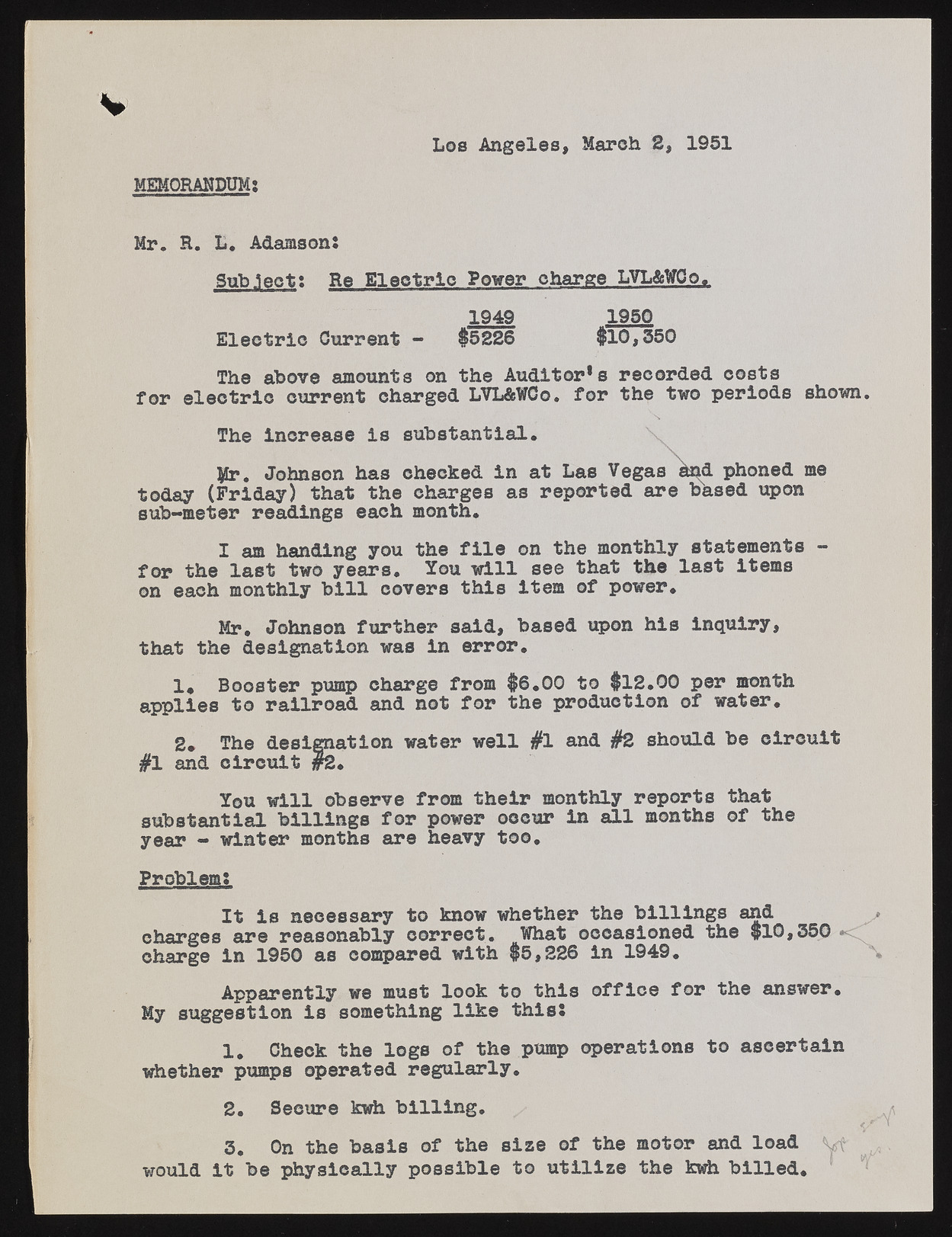Copyright & Fair-use Agreement
UNLV Special Collections provides copies of materials to facilitate private study, scholarship, or research. Material not in the public domain may be used according to fair use of copyrighted materials as defined by copyright law. Please cite us.
Please note that UNLV may not own the copyright to these materials and cannot provide permission to publish or distribute materials when UNLV is not the copyright holder. The user is solely responsible for determining the copyright status of materials and obtaining permission to use material from the copyright holder and for determining whether any permissions relating to any other rights are necessary for the intended use, and for obtaining all required permissions beyond that allowed by fair use.
Read more about our reproduction and use policy.
I agree.Information
Digital ID
Permalink
Details
More Info
Rights
Digital Provenance
Publisher
Transcription
L o s A n g e l e s , M arch 2 , 1 9 5 1 MEMORANDUM: Mr. R. L. Adamson: Subject: Re Electric Power charge LVL&WCo. 1949 1950 Electric Current - $5226 $10,350 The above amounts on the Auditor*s recorded costs for electric current charged LVL&WCo. for the two periods shown. The increase is substantial. Mr. Johnson has checked in at Las Vegas ^ d phoned me today (Friday) that the charges as reported are based upon sub-meter readings each month. I am handing you the file on the monthly statements - for the last two years. You will see that the last items on each monthly bill covers this item of power. Mr. Johnson further said, based upon his inquiry, that the designation was in error. 1* Booster pump charge from $6.00 to $12.00 per month applies to railroad and not for the production of water. 2. The designation water well #1 and #2 should be circuit #1 and circuit #2. You will observe from their monthly reports that substantial billings for power occur in all months of the year - winter months are heavy too. Problem: It is necessary to know whether the billings and charges are reasonably correct. What occasioned the $10,350 •<. charge in 1950 as compared with $5,226 in 1949. Apparently we must look to this office for the answer. My suggestion is something like this: 1 2 3 1. Check the logs of the pump operations to ascertain whether pumps operated regularly. 2. Secure kwh billing. 3. On the basis of the size of the motor and load would it be physically possible to utilize the kwh billed.

